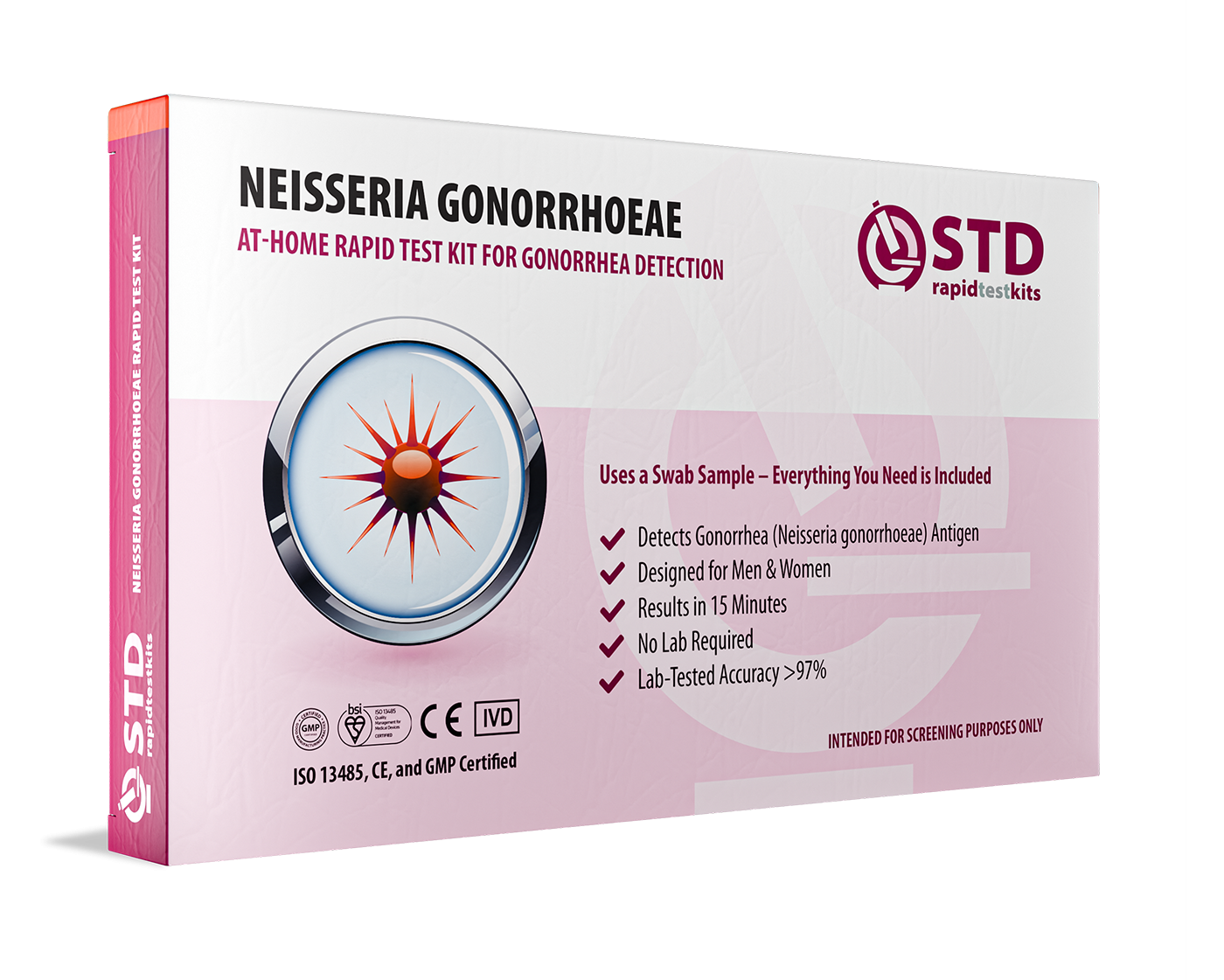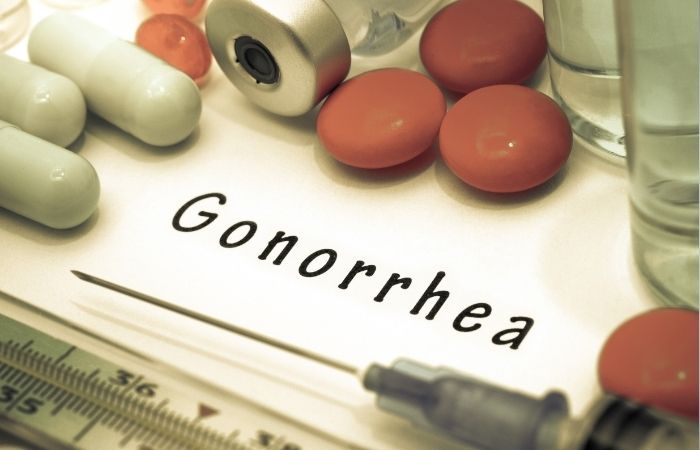Quick Answer: The best time to test for gonorrhea is 7 to 14 days after exposure. Testing earlier is possible, but a second test may be needed to confirm accuracy.
Who This Guide Is For (And Why It Matters)
This guide is for anyone who’s had a recent sexual encounter and now feels stuck between panic and procrastination. Maybe you’re in a monogamous relationship with a trust breach. Maybe it was a one-night stand after a breakup. Maybe you’re queer, trans, poly, or just plain confused. We see you.
Not everyone can walk into a clinic the next day. Some are afraid of being judged, others live in rural areas, and some just need answers fast, without awkward conversations or insurance paperwork. That’s where understanding timing, test type, and retesting logic comes in, it gives you power. Testing is not a confession. It’s care.
This guide will walk you through what counts as a gonorrhea test, when the infection becomes detectable, what symptoms can and can’t tell you, your testing options, and what to do if symptoms persist or results come back positive.

People are also reading: No Symptoms, No Problem? Not Always.
What Counts as a Gonorrhea Test?
When people say "get tested for gonorrhea," they usually mean a nucleic acid amplification test, or NAAT. This is the best way to find out if you have gonorrhea or chlamydia. It looks for the bacteria's actual genetic material, not just antibodies or antigens. This makes it very sensitive, even in the early stages of an infection.
You can get tested by giving urine samples, vaginal or urethral swabs, throat swabs (for oral exposure), or rectal swabs (for anal exposure). Depending on how you have sex, many labs and home tests now offer multi-site options. The CDC says that swabs are often more sensitive than urine in some places of exposure, especially for women and LGBTQ+ people.
You can get STD Rapid Test Kits that will send you a private, home gonorrhea test in the mail. You can order a gonorrhea rapid test here, or if you're not sure what STD to test for, you can get a combo kit.
Understanding Window Periods for Gonorrhea
The window period is the time between exposure to an STD and when a test can reliably detect it. For gonorrhea, this period is usually 2 to 7 days, but test sensitivity peaks around day 14. Testing too early increases your chance of a false negative, even if you're already infected.
This is different from the incubation period, which is how long it takes for symptoms to show up. In gonorrhea’s case, symptoms (if they appear at all) typically start 2 to 5 days after exposure, but many people never experience symptoms at all.
| Category | Gonorrhea Timeline |
|---|---|
| Minimum Detection Window | 2–3 days post-exposure (some tests may detect) |
| Optimal Testing Window | 7–14 days post-exposure |
| Symptom Onset (if any) | 2–5 days post-exposure (average) |
| Peak Test Accuracy | 14 days or later |
Figure 1. Gonorrhea detection and symptom timeline. Waiting until day 7–14 after exposure gives the most accurate results.
What Exposure Really Means (And Why It Changes the Timing)
Not all exposures are equal, and your risk level affects how and when to test. Let’s break it down through real-life scenarios.
Scenario 1: You had vaginal sex with a new partner who later told you they tested positive. It’s been 3 days. You’re feeling fine. In this case, testing immediately may give you peace of mind, but it's too early to rule anything out. You should test again after day 7, and ideally again at day 14 if the first test was negative.
Scenario 2: You received oral sex and now have a sore throat, but your partner claims they're “clean.” Oral gonorrhea is often symptomless and untested. A throat swab NAAT test is your best option here, around day 7 or later. If you're using an at-home kit, make sure it includes throat testing.
Scenario 3: You used a condom, but it slipped. No symptoms yet, but it’s been 9 days. Perfect timing. This is when test accuracy climbs. If you test now, a follow-up may not be needed unless symptoms develop.
Scenario 4: You were sexually assaulted or exposed against your will. Immediate medical care is crucial, not just for STD testing but also for emergency contraception, emotional support, and forensic documentation. Some providers may start preventive antibiotics. Testing should occur at baseline (now) and again at 2 weeks.
Timing isn’t about blame. It’s about biology. Your body needs time to show the infection on a test, even if you’re infected right now.
Check Your STD Status in Minutes
Test at Home with RemediumGonorrhea Test Kit

 For Men & Women
For Men & Women Results in Minutes
Results in Minutes No Lab Needed
No Lab Needed Private & Discreet
Private & DiscreetOrder Now $33.99 $49.00
Rapid Tests vs Lab Tests: What’s the Difference?
At-home tests and rapid kits can be lifesavers, literally. But not all are equal when it comes to accuracy, sample type, or timing. Let’s compare them side-by-side.
| Method | Speed | Sample | Accuracy | Best Used When... |
|---|---|---|---|---|
| Rapid Test (At-Home) | 10–20 minutes | Urine or swab | Moderate–High (some early false negatives) | You want privacy and quick results |
| Mail-In Lab Kit | 1–3 business days | Urine or swab | High (NAAT-based) | You want lab-grade accuracy at home |
| Clinic Test (Lab) | Same-day to 2–4 days | Urine, vaginal, rectal, throat swab | Very High (NAAT or culture) | You have symptoms or complex exposure |
Figure 2. Comparing gonorrhea test methods by speed, accuracy, and use case.
Can You Test Too Early for Gonorrhea?
Absolutely. And it’s one of the most common mistakes people make. The urge to “just know” is human, but a test taken too early may come back negative even if you’re infected. That’s because the gonorrhea bacteria hasn’t reached detectable levels yet.
False negatives are most likely if you test within the first 48–72 hours after exposure. Some NAATs can detect the infection by day 3, but it’s inconsistent. The safer bet? Test between days 7 and 14, when accuracy rises above 90%.
And remember, no test is perfect. If your first test is negative but you still have symptoms, unusual discharge, pelvic pain, or burning during urination, retest or seek clinical care. Accuracy matters, but listening to your body matters more.
When Retesting Is Necessary
If you’ve been treated for gonorrhea, retesting is still part of the journey. Why? Because re-infection is common, especially if your partner wasn’t treated, or if you didn’t know who exposed you in the first place.
Here’s the general guidance:
- After treatment: Retest at 3 months, even if symptoms are gone
- After a negative test taken too early: Retest around day 14
- If symptoms return or persist: Retest immediately
Some people test at day 3, get a negative, and think they’re clear, only to see symptoms spike by day 10. That’s not a failure. That’s biology. Always give your body time to show the infection. And if your partner tested positive, treat it seriously, even if you feel fine.
If your head keeps spinning, peace of mind is one test away. This combo test kit checks for gonorrhea, chlamydia, and more, discreetly, accurately, and fast.

People are also reading: The STD That Tricks You Into Thinking It is Razor Burn
Privacy, Shipping, and Discreet Support
Let’s talk logistics, because when you’re anxious about an STD test, even the box on your doorstep can feel overwhelming. At-home test kits from reputable providers like STD Rapid Test Kits are shipped in plain, unmarked packaging. No logos. No labels. No clues about what’s inside.
Shipping usually takes 1–3 business days, and many kits are stocked for same-day dispatch. That means you can go from panic to action within 48 hours. Your test results stay private, and there’s no need to notify anyone unless you choose to, no reporting, no awkward pharmacy pickups, no waiting rooms.
If you're testing while traveling, relocating, or living with roommates, plan ahead. You can have the kit sent to a trusted address or pick it up at certain secure mail centers. The key is taking action before the spiral of shame or indecision takes over.
What If You Test Positive?
Take a deep breath. Seriously. Testing positive for gonorrhea doesn’t mean you’re dirty, reckless, or broken. It means you got exposed to a very common, very treatable bacterial infection, and now you have the power to take care of yourself.
Here’s what to do next:
- Seek treatment: Gonorrhea is usually treated with a single dose of antibiotics. Many clinics offer walk-in care, and telehealth prescriptions are increasingly available.
- Inform partners: Anyone you’ve had sex with in the past 60 days should be informed so they can get tested and treated. If you can’t or don’t feel safe doing it yourself, there are anonymous partner notification services that can help.
- Don’t have sex until treatment is done: That means both you and your partner(s) have completed treatment and are symptom-free.
Imagine this: You’re sitting in your car, staring at a positive result. Your heart drops. Then you remember, you ordered treatment, you told your partner, and they thanked you. That’s not shame. That’s courage.
You don’t have to do this alone. You can test your partner, too. 7-in-1 STD At-Home Rapid Test Kit covers gonorrhea and other common STDs so everyone can move forward together.
FAQs
1. Can I really test for gonorrhea just a few days after sex?
You can test at 3 days, but just know, that early window is tricky. Your body might not have enough of the bacteria yet for a test to catch it. If it comes back negative and you’re still unsure or feel off, retest around day 7 to 14. A lot of people test too early and get false reassurance, don’t be one of them.
2. What if I don’t have any symptoms? Should I still test?
Yes. A thousand times yes. Gonorrhea is infamous for being sneaky, especially in women, people with vaginas, and anyone exposed orally or anally. You can have zero symptoms and still pass it on or develop serious complications later. If you had unprotected sex or your partner tested positive, testing is just smart, not overreacting.
3. Can I use an at-home test and still trust the results?
Absolutely, as long as you're using a high-quality test, following the instructions, and testing at the right time. For early exposures, rapid tests can miss a new infection, so retesting is key. Think of it like a pregnancy test: timing matters. Test smart, not just fast.
4. Is it possible to get gonorrhea in your throat?
Yep. And it rarely comes with symptoms. Oral gonorrhea can feel like a sore throat or nothing at all. It’s most common from unprotected oral sex and usually needs a swab test, not a urine test, to detect. If your exposure involved oral, make sure you’re testing the right area.
5. How long should I wait to test if my partner just tested positive?
Ideally, wait at least 7 days after your last sexual contact with them to test. That gives the infection enough time to show up on a test. But if you’re already experiencing symptoms (burning, discharge, pain), don’t wait, test now and plan to retest if needed.
6. What if I took antibiotics recently, will that mess up the test?
It can. If you took antibiotics for something else (a sinus infection, UTI, etc.), they might suppress the bacteria just enough to affect test results. Always tell your provider or check the insert if you’re using an at-home kit. Testing too soon after antibiotics could lead to a false negative.
7. I tested negative, but I still feel weird. Now what?
Trust your gut. If your body’s telling you something isn’t right, pain, discharge, pelvic pressure, weird burning, retest. False negatives are real, especially if you tested early or only used one type of sample. You’re not overreacting. You’re advocating for yourself.
8. Do I need to tell my ex if I test positive?
Hard one. If you were sexually active during the likely exposure window, yes, it’s the right thing to do. But it doesn’t have to be dramatic. There are anonymous partner notification tools online, or you can send a direct message. Keep it short, kind, and factual: “Hey, just a heads up, I tested positive for gonorrhea. You should get checked too.” You’re protecting their health, not confessing a crime.
9. Is it true you have to retest after treatment?
Yes, especially within 3 months. Reinfection is way more common than people think. Even if you and your partner both got treated, it’s easy to pass it back and forth if you didn’t wait the full post-treatment period before having sex again. A follow-up test is just closure. Take it.
10. Can I still test if I’m pregnant or immunocompromised?
Totally. In fact, you should. Gonorrhea can cause complications during pregnancy, and immunocompromised folks might not show symptoms or clear infections as quickly. The tests are safe, you just might need closer monitoring. Talk to a provider, or use a reliable at-home kit and follow up if anything feels off.
You Deserve Answers, Not Assumptions
We all make decisions in moments of heat, hope, or heartbreak. But your next step doesn’t have to come from fear. It can come from clarity. Gonorrhea is one of the most common STDs for a reason, it spreads easily, often silently, and affects people across every gender, age, and identity.
If you've had unprotected sex, an unexpected exposure, or you’re just not sure, test. The sooner you know, the sooner you can take care of yourself and anyone else involved. This at-home combo test kit checks for the most common STDs discreetly and quickly.
How We Sourced This Article: We combined current guidance from leading medical organizations with peer-reviewed research and lived-experience reporting to make this guide practical, compassionate, and accurate. In total, around fifteen references informed the writing; below, we’ve highlighted six of the most relevant and reader-friendly sources. Every external link in this article was checked to ensure it leads to a reputable destination and opens in a new tab, so you can verify claims without losing your place.
Sources
1. CDC Gonorrhea Treatment Guidelines
3. Planned Parenthood: Gonorrhea Basics
4. CDC: Gonorrhea Follow-Up & Retesting Guidelines
5. How Long Does It Take for Gonorrhea to Show Up? – Healthline
6. Gonorrhea Incubation & Testing Window – Testing.com
7. Gonorrhea Incubation Range – HHS Iowa
About the Author
Dr. F. David, MD is a board-certified infectious disease specialist focused on STI prevention, diagnosis, and treatment. He blends clinical precision with a no-nonsense, sex-positive approach and is committed to expanding access for readers in both urban and off-grid settings.
Reviewed by: Maya Ross, MPH, CHES | Last medically reviewed: September 2025
This article is for informational purposes and does not replace medical advice.










